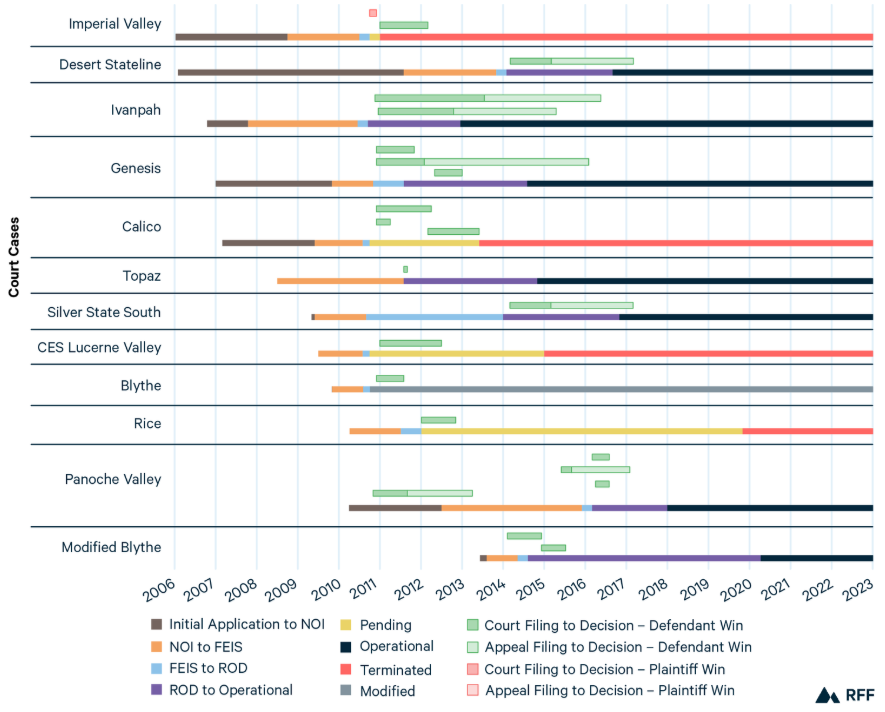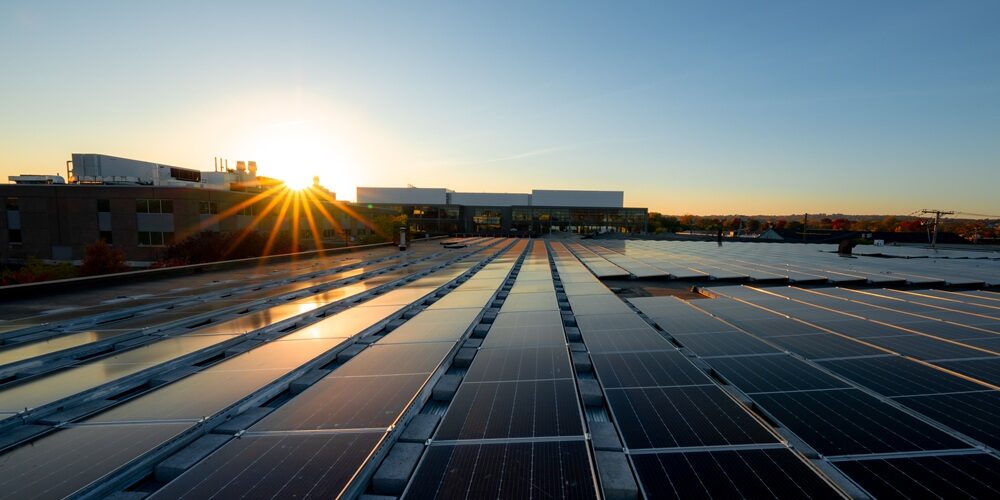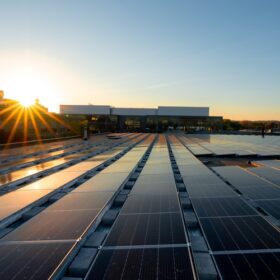More than 50 years after Nixon signed the the National Environmental Policy Act (NEPA) into law, the legislation is still known as a major obstacle to locating solar and wind projects on federal public lands or when seeking federal funding. A paper by the Resources for the Future (RFF) examined how litigation impacts utility-scale solar and wind energy projects when undergoing NEPA review.
NEPA established a national policy for the environment. NEPA requires federal agencies to assess the environmental effects of proposed major federal actions prior to making decisions such as approving a lease for infrastructure projects built on federal lands or providing financing for these projects, RFF said.
While lawmakers continue to explore how to adjust NEPA reviews to make them more expeditious and encourage more energy development on federal land, RFF said the trade-offs of these are unclear when it comes to renewable energy projects.
“Changes to NEPA’s environmental review process could speed up project development timelines. But so too would efforts to address some of the other factors delaying projects after the completion of the NEPA process,” said Emily Joiner, an RFF research associate. “While environmental reviews and lawsuits are not insurmountable obstacles, policy proposals to revamp permitting processes in the United States may consider the variety of factors contributing to delays in renewable projects.”
Once NEPA permits are issued, many projects are faced with additional delays if a federal agency’s decision is challenged in court.

Image: Resources for the Future
NEPA environmental impact statement reviews only account for a small fraction of total NEPA actions, yet they account for a major fraction of NEPA court challenges, the authors said.
Nearly a third of solar projects and half of wind projects completing NEPA environmental impact statement reviews faced court challenges. Though RFF said the defendants, governments agencies and project developers, prevailed in most cases, renewable energy projects that were challenged in court took an average 53 months to reach operational status, compared to 38 months for those that did not face legal challenges. For solar, court challenges delayed the projects’ development timelines an average of 14 months.
Only three of the 41 court cases challenging renewable energy projects had completed their environmental assessments, the report said.
However, court challenges caused or contributed to the termination of three projects, and six additional projects experienced significant delays as developers waited for final court approval, the report said.
The grounds for challenging the projects in federal court were based on NEPA violations and multiple other federal statutes, the report said. In state courts, the challenges were based on violations the state’s environmental policies, and also state or local zoning and planning requirements.
Fast track and the Bureau of Land Management
At the end of 2009, the Bureau of Land Management (BLM) had more than 200 active applications for renewable projects on BLM lands, 128 of which were for solar, the report said. Every filed court challenge that contested NEPA reviews by the Bureau of Land Management addressed the Obama administration’s “Fast Track” candidates, the report said.
“However, after this batch of fast-track lawsuits, we have not identified any lawsuits initiated after early 2014 that challenged BLM NEPA decisions,” RFF said.
From early 2014 to the end of 2023, RFF said BLM completed six solar and one wind environmental
impact statements, and 10 solar and five geothermal environmental assessments. “On the other hand,” the report said, “lawsuits have been filed against two solar projects and several wind farm projects challenging decisions by other (non-BLM) federal and state agencies.”
RFF noted several potential explanations for the lack of BLM lawsuits after 2014.
“One is the low success rate for plaintiffs: the courts largely ruled in favor of BLM and the project developers,” RFF said. “As a result, local or regional groups and the tribes may have concluded that they would get better outcomes by negotiating with BLM and the developers within the NEPA process rather than by going to court.”
Another possible reason, RFF said is that BLM and developers “may also have learned that careful attention to local or regional groups and tribes in the NEPA process would help them avoid getting tangled up in post-NEPA court cases.”
Or, BLM and the developers may also have become more selective in choosing sites by avoiding sensitive habitat and cultural areas, RFF said.
Resources for the Future (RFF) is an independent, nonprofit research institution in Washington, D.C. Its mission is to improve environmental, energy and natural resource decisions through impartial economic research and policy engagement.
This content is protected by copyright and may not be reused. If you want to cooperate with us and would like to reuse some of our content, please contact: editors@pv-magazine.com.









By submitting this form you agree to pv magazine using your data for the purposes of publishing your comment.
Your personal data will only be disclosed or otherwise transmitted to third parties for the purposes of spam filtering or if this is necessary for technical maintenance of the website. Any other transfer to third parties will not take place unless this is justified on the basis of applicable data protection regulations or if pv magazine is legally obliged to do so.
You may revoke this consent at any time with effect for the future, in which case your personal data will be deleted immediately. Otherwise, your data will be deleted if pv magazine has processed your request or the purpose of data storage is fulfilled.
Further information on data privacy can be found in our Data Protection Policy.